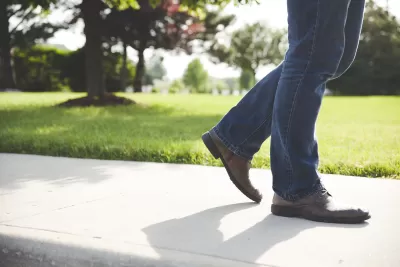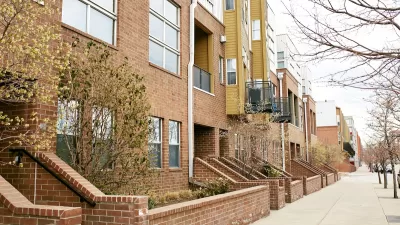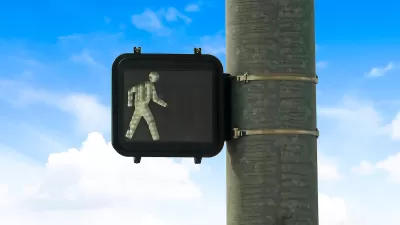Over a quarter of city blocks lack sidewalk infrastructure. An advocacy project to reduce traffic speeds and increase pedestrian safety on these streets has evolved into a city-funded program.

In Seattle, 45,000 blocks lack sidewalks, and last year the Seattle Neighborhood Greenways, a neighborhood-based, volunteer coalition, launched a DIY program to make streets safer for pedestrians. "The concept is called Home Zones and is meant to create 'living streets' that can be shared between cars and people," writes Emily Nonko.
After a Home Zones pilot program in a north Seattle neighborhood, the Seattle City Council allocated $350,000 for an expanded program. "The greater vision of Home Zones, according to [Gordon] Padelford, is installing a combination of speed humps, traffic diverters, wayfinding signage and public artwork — lower-cost options in lieu of sidewalks," notes Nonko.
The Seattle Department of Transportation is overseeing the official pilot program, which will be implemented in two neighborhoods. But advocates say progress has been slow and the program still has not been fully funded. They also want to see more funding in next year’s city budget for implementable low-cost alternatives to sidewalks.
FULL STORY: DIY Initiative Addressing Lack of Seattle Sidewalks Becomes a City Pilot

Trump Administration Could Effectively End Housing Voucher Program
Federal officials are eyeing major cuts to the Section 8 program that helps millions of low-income households pay rent.

Planetizen Federal Action Tracker
A weekly monitor of how Trump’s orders and actions are impacting planners and planning in America.

Ken Jennings Launches Transit Web Series
The Jeopardy champ wants you to ride public transit.

Washington Legislature Passes Rent Increase Cap
A bill that caps rent increases at 7 percent plus inflation is headed to the governor’s desk.

From Planning to Action: How LA County Is Rethinking Climate Resilience
Chief Sustainability Officer Rita Kampalath outlines the County’s shift from planning to implementation in its climate resilience efforts, emphasizing cross-departmental coordination, updated recovery strategies, and the need for flexible funding.

New Mexico Aging Department Commits to Helping Seniors Age ‘In Place’ and ‘Autonomously’ in New Draft Plan
As New Mexico’s population of seniors continues to grow, the state’s aging department is proposing expanded initiatives to help seniors maintain their autonomy while also supporting family caregivers.
Urban Design for Planners 1: Software Tools
This six-course series explores essential urban design concepts using open source software and equips planners with the tools they need to participate fully in the urban design process.
Planning for Universal Design
Learn the tools for implementing Universal Design in planning regulations.
Heyer Gruel & Associates PA
Ada County Highway District
Institute for Housing and Urban Development Studies (IHS)
City of Grandview
Harvard GSD Executive Education
Toledo-Lucas County Plan Commissions
Salt Lake City
NYU Wagner Graduate School of Public Service





























